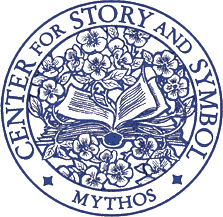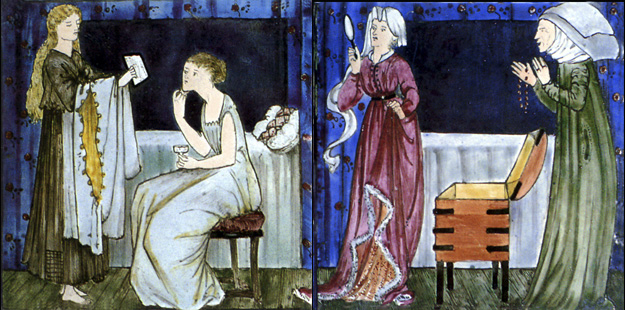
Insights from a Cinderella Story
Story and Symbol Therapy Courses Register Community Dates Contact
Seminar Dates and Formats Articles Joseph Campbell Site Map Search

Some movies are so rich with symbolism that they practically ask us to look for meanings lurking beneath the surface. The current film Ever After - A Cinderella Story stars Drew Barrymore as the girl with the glass slipper and Anjelica Huston as a memorable wicked stepmother. It is fascinating to take the characters in a story as aspects of ourselves. At its heart, "Cinderella" is an orphan story. It is about losing parents and coping with the grief and dislocation that follows such a loss. The world's favorite fairy tale has once again provided rich source material for a big production. This movie departs from the familiar story in significant details, while maintaining the spirit of the original. The filmakers have included the best lessons from the classic tale. There is much here that we can take figuratively.
In this version, the storytellers emphasize the girl's great love for her father. When the father dies, his new bride cries out, "You cannot leave me here." Anjelica Huston shows us that the stepmother's distress is enormous. A man she barely knew brought her to a new place with her daughters -- and left her. Her only connection to this life was the man who has now abandoned her. It is helpful to realize that the stepmother's stern behavior has some legitimacy. She is in a tough situation as a single mother with a household to run, and three girls to raise. Still, Cinderella hardly deserves the fall from the good life she had with her father. In one scene, when the girl appears ungrateful for the life as a servant, the stepmother says wearily, "After all that I do." It is one of those moments when the oppressor twists things around to feel like the victim.
We might see the lost true parents as representing an inner sense of safety and self-acceptance. Cinderella has no memory of her mother and yet the mother has a presence. In the course of the adventure, our heroine uses her mother's name. People say that she looks like her mother. The dress and glass slippers were her mother's and now wait in the girl's trousseau stashed away in a hope chest. It's as if the story is suggesting that we each have two inner mother-images to choose from. The shift to the step-mother symbolizes falling into our fears and self-rejection. In the classic version, Cinderella resolves this emotional quandary by bonding with the Fairy Godmother. We can see this as a rediscovery of the sense of unqualified acceptance that came from true parents. The implication is that we all have this potential to accept ourselves if we can just find it within.
This is a tale about the fresh young qualities within each of us. It is about what we're to do with that earnest part of ourselves. The story shows us how it feels when the shelter of childhood ends. The widower's daughter is working like a servant in her own house. The chores run her ragged; washing, ironing, scrubbing, dusting, and cooking. This sounds like the real life we all know well. The mundane tasks never end. Keeping a hopeful spirit in the face of all the chores is a considerable challenge. There are always step-sisters within -- inner critics ready to find fault with everything we do. It is easy to project this -- so that we imagine that others think badly of us. Dealing with the mean step-sister voices within is a struggle for most people.
There is no Fairy Godmother in this movie. The filmakers have removed the familiar magic tricks of the tale. No pumpkin turns into a coach. No birds make a dress for her. A different kind of magic is at work. There is a mentor figure in place of the Fairy Godmother -- and the movie's handling of this is a fine surprise The crucial role of a mentor character in the tale reaffirms the central notion that we all get our parenting where we can. The presence of a mentor also suggests that we have an inner wisdom that will be of assistance if we know how to get in touch with it. There are aspects of each person that are more mature than the other parts -- and these qualities can come forward at crucial moments.
This heroine is bookish, given to reading while sitting on the hearth, using the fire for light. Her favorite is the last book her father brought home, Thomas More's Utopia. Sitting virtually in the fireplace, she often gets soot on her clothes. The stepsister's derisive nickname for her is Cinderella. In the classic tale, she gets sooty from cleaning out the ashes. Either way, the symbolism is clearly about grief. Ashes often represent the realm of the dead. Mourning rituals from many traditions involve wearing ashes.
An underlying theme in this story is bereavement. If there is wisdom here for our own lives, it is probably about the importance of grieving. People who have suffered great losses are often acutely aware of the many ways our customs and manners dampen emotion. There is great healing in fully, deeply, acknowledging and experiencing our grief. After a death, it is rare to feel that things are quite right for a long time. The impact of both parents dying shapes the drama of Cinderella's life. A story about the effects of untimely losses has insights for us all. We all suffer setbacks and must face many challenges if we are to regain a sense of place and purpose.
The announcement by the king is the call, the moment that offers the possibility of something out of the ordinary. In personal psychology, this is when we realize our routine perspectives can give way to new ways of seeing ourselves. What he offers is a great ball at the castle, at the palace. The reason for the ball will be that his son is of age. The heir apparent, the crown prince, must choose a bride so that the kingdom can go on.
In ancient times, most people believed that the king and the queen were gods. This is still true in some places. For example, many Japanese still think that the emperor is at least slightly divine. Royalty in a fairy tale may represent the sacred realm. The King has invited Cinderella to a dimension beyond her dreams. Such transcendent characters call us out of ordinary experience. Symbolically, they suggest an opening to our higher selves.
The king invites all eligible women to the ball. The excitement spreads quickly. The stepsisters want to go, and so does our heroine. The stepmother will permit this if Cinderella completes all of her chores in time. Of course, this is a cruel trick. When it is time for the ball, the stepmother has found reasons to withdraw permission. The stepmother is a marvelous symbol for harshness. Psychologically, she would represent our capacity to treat ourselves badly -- and cheat ourselves out of radiant opportunities by postponing the enjoyment of life.
One of the stepsisters has every intention of winning the Prince's favor. This step-sister may represent our vain qualities and self-importance. The part of the personality that believes in control tends to value comparisons, power, status, and competing. That kind of consciousness wants the Prince for material advantages and to make the others envious. We all have to watch out for our ability to indulge crass motivations -- that can ultimately be self-defeating.
As always, Cinderella has her helpers. At times of crisis sometimes we feel very alone. It is important to realize that we have allies that are available to us. We have friends, teachers, family. Later, we have the memory of all of these. It's important to be able to be in touch with them both literally and in the imagination. Their support does not end when they die. We can always use memory to draw on their love in the present moment. In stories, the most magical kind of help is from some kind of sage. In the stories it's often someone who magically appears to provide help at a time of great anxiety. In our lives, it can be the surprising awareness of a perspective or strength we didn't know we had.
In all tellings of the Cinderella story, the elegant dress plays an important role. Her mother was aristocracy and the dress in a link to that noble status. When she is in clothes that designate a well-born person, others believe her to be a true lady. When she appears at the ball, she wears the stunning gown prepared by her helpers. This is simultaneously a link to her mother and a return to her true nobility. The psychology here is that we each have an inner elegance and a noble quality to reclaim.
The Cinderella story teaches us something about coping. When we suffer losses, we may feel like orphans. It is as if life has left us in the hands of wicked impostors, people who claim to be family but deny our humanity. They may see us as servants, useful only to play supporting roles in their life dramas. The structure of the story is moving from problematic relationships to finding allies, mentors, and self-reliance. It is choosing to claim the full complexity of our many sides. This is the long process sometimes called adulthood.
Cinderella bides her time. She is faithful to her dreams, keeping them secret and nourishing them until they are strong enough to bear fruit. Somehow, Cinderella knows that imagination ultimately creates reality. She does not yield to those around her who would deny her essential nobility. She never thinks of herself as a servant. The insight is to keep faith in ourselves. If we remember who we are and keep working on our dreams, more might be possible than anyone thought.
In the end of such a story the protagonist usually gets a bountiful prize. This reward signifies the rich inner life that is the result of all our diligent seeking. In the Cinderella story, she gets a husband, but it is not that the prince rescues her. She solves her own problems, even in the classic version. The psychology of the story involves an inner shift -- away from inadequacies to a stronger identity. All versions of the tale include this essential transformation. Symbolically, the Prince is her missing half. Finding the inner Prince or Princess is claiming whatever part of ourselves that we did not previously acknowledge. It is owning qualities thought to belong to the other gender and declaring our full radiant human dignity.
It is best to consider all these interpretations in a light-hearted spirit. When we take a symbolic look a story, there are thousands of possible implications for each detail. These are a just few reactions to seeing "Ever After - A Cinderella Story." There are many more meanings that we could uncover.
When something reaches us emotionally in a book or movie, it is probably touching some memory or pattern that is waiting within us. Seeing the various characters as reflecting the inner life is a good way to take an internal inventory. There is no end to the insights available when we start looking at familiar stories as wisdom tales.